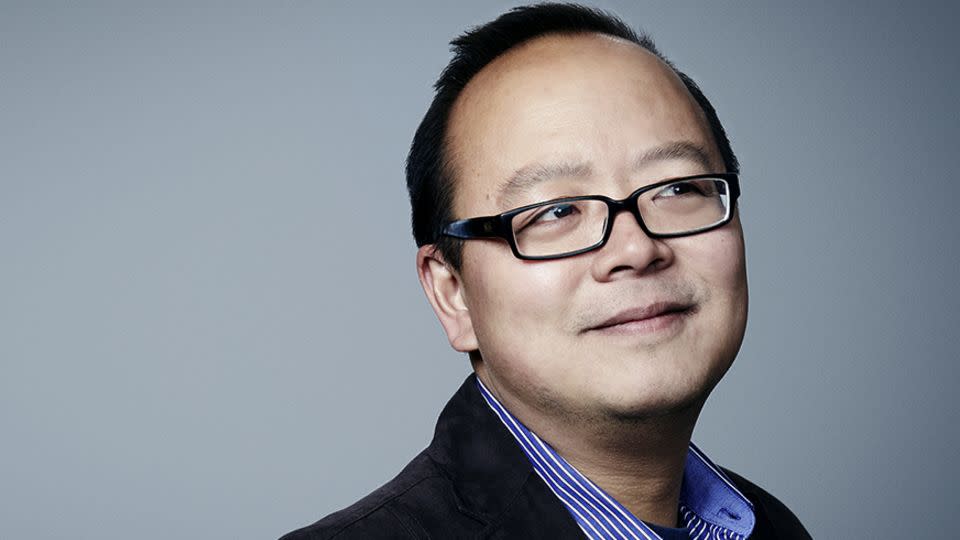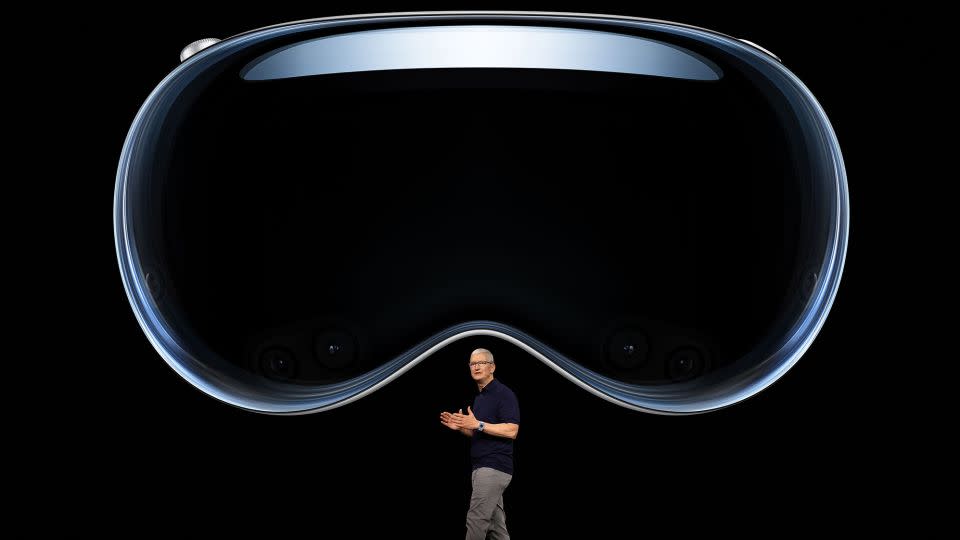Opinion: Apple can still get back to its golden age
Editor’s Note: Jeff Yang is a frequent contributor to CNN Opinion. He co-hosts the podcast “They Call Us Bruce” and is co-author of the bestselling book “Rise: A Pop History of Asian America from the Nineties to Now” and author of “The Golden Screen: The Movies That Made Asian America.” The opinions expressed in this commentary are his own. Read more opinion on CNN.
Apple’s Worldwide Developer Conference (WWDC) is just days away, and as usual, the technorati are buzzing about what might be unveiled at the company’s annual bleeding-edge technology event: An updated iPhone operating system with a heavy AI focus? New Mac hardware? A “One More Thing” wildcard?

Naturally, Apple has locked down the details of the revelations it plans on releasing on Monday tighter than Fort Knox. But the sense among many observers is that whatever they are, they’d better be good. Because since the beginning of the year, there have been signs that the fruit factory’s future prospects could be souring.
The company’s sales in China dropped dramatically earlier this year, as the iPhone was met with strong competition from local offerings like the Huawei Mate, forcing Apple to offer aggressive discounts there. In 2023, the International Trade Commission ruled that Apple stepped on medical equipment manufacturer Masimo’s existing patents in building a pulse oximeter into its newest Apple Watches, leading the company to halt sales of those versions of its wearable in December, until the feature could be temporarily removed, pending appeal of the decision. And in March, the Justice Department filed a lawsuit against Apple, alleging that the company engages in a broad range of anticompetitive practices related to its dominance in the US smartphone market — litigation that threatens the very core of the company’s business. (Apple denied the allegations.)
Of course, by most measures, the gadget maker is still a gargantuan global success. After tumbling earlier in the year, the company’s stock now stands just short of its all-time high, bringing its valuation back to about $3 trillion dollars (just six years after it became the world’s first trillion-dollar company). Juicing Apple’s growth? The iPhone, of course, which commands a 17% share of the global smartphone market as measured by units sold, but a staggering 43% of global smartphone revenues. And Apple’s services business, mostly defined by sales of apps and content, continues to thrive, and is projected to make up a quarter of the company’s total revenues by 2025.
A tech company’s success isn’t just measured by the products it has on the market in the present however, but its ability to innovate and stay ahead of the curve. That means Apple will be challenged to come up with some announcements that feel like they recapture some of the company’s golden-age glory.
Early focus has been on what Apple is planning on doing with artificial intelligence. Some rumors suggest that Apple is partnering with OpenAI (and perhaps Google and AI company Anthropic as well), which might be an unusual move in a number of respects — running counter to the company’s preferences to keep its most vital technologies in house, while feeling at best like a catch-up move rather than a revolutionary breakthrough.
Others have pointed to Apple’s recent release of OpenELM, a set of four scaled-down open-source language models, as an indicator of the company going in a different direction: delivering efficient AI features “on handset” without the need to call on servers in the cloud.
But the new capabilities being discussed as a result hardly feel earth-shattering: Transcribing voice memos? Summarizing chats and websites? Retouching photos? Uh…custom emojis? None of these are likely to have the impact of Open AI’s demo of GPT-4o, its voice-enabled latest large language model.
The reality is that for all of Apple’s profitability and streamlined commercial prowess under Tim Cook, it has yet to recapture the unique ability that it had under cofounder and iconic CEO Steve Jobs to control the cultural narrative — to make people feel that the company is still capable of changing the way people think about technology and how it intersects with their lives.
It’s a tougher argument to make now, given that Apple’s most hotly anticipated bets on its own innovation have either crashed and burned. In February, the company finally shut down Project Titan, the codename for its decade-long, $10 billion internal initiative to design an Apple-branded electric car. And Apple’s unveiling last year of its mixed reality “headtop” computer, the Vision Pro, generated initial buzz with its undoubtedly groundbreaking feature set and performance specs, but failed to catch immediate fire with consumers upon release.

The seeds of Vision Pro’s problem were visible in the WWDC unveiling itself. The dazzling computer-simulated demo, which showed visor-wearing users meditating in front of giant virtual mandalas, wandering around floating windows scattered across different rooms of their homes, and doing work while seated, surrounded by a swarm of apps, felt disconnected from things that people actually wanted to do.
By contrast, when Jobs pulled the curtains back on the first iPod in 2001, he held it up and said a single phrase that summed up its user promise: “1,000 songs, and it goes right in my pocket.” All the music you love, when you want it, at your fingertips. The iPod was dragged by some as overpriced and unnecessary, but the core benefit it provided was irresistible to actual consumers, and it brought an entirely new category of portable consumer electronics into the mainstream as a result.
What’s the songs-in-your-pocket equivalent for Vision Pro? Spreadsheets on your face? That’s certainly not a benefit capable of luring any but the earliest of adopters into spending $3,500 for the privilege of “spatial computing.” No one should count Vision Pro out — the iPad, Apple Watch and even the original iPhone all needed a little time and iteration to find their footing. But so far, if Apple is looking to reclaim its real-world relevance, Vision Pro isn’t it — yet. The device’s power consumption requires it to be tethered to an awkward waist-mounted external battery that gives it just a few hours of unplugged usage. Its most distinctive feature, EyeSight, which uses an outward-facing screen to present a ghostly image of the wearer’s eyes to the world in an attempt to remove the sense of the gadget as a barrier between users and the world around them, has been the subject of much mockery.
Still, Apple occupies a unique strategic space: The world sees it as one of the few true lifestyle brands in consumer tech, with products whose impact isn’t expressed in benchmarks, but in values shifts and behavior modification. And that’s because the seeds of Apple’s extraordinary success lie in the company’s ability to motivate people to reimagine their worlds around their products.
While the 1998 all-in-one iMac specs fell short of comparable Intel hardware, its interior decor-savvy sensibility led people to use it as a living room computer that was flaunted rather than hidden behind partitions, in turn opening the door for ever-deeper integration of consumer computing devices into our media consumption, home control and family interactions.
A decade later, the MacBook Air, famously demo’d in 2008 as the world’s thinnest notebook, thin enough to fit in a standard manila envelope, became the first laptop to really feel like a fashion accessory — a “purse PC,” if you will. Even the original iPhone, introduced the year before, forced users to re-envision their relationship with both handheld devices and screen-based communications, taking away most physical buttons and inviting people to tap icons on a minimalist touchscreen instead. The end result has been transformative.
What’s important to note is that all of these cultural revolutions are fundamentally rooted in design choices, not technological breakthroughs — changes in form factor and user interface based on extraordinary insights into how people want to interact with their digital stuff and with one another.
In the 13 years since Cook took the reins, and especially in the half decade since Jony Ive, former chief design director, left Apple, the company hasn’t yet managed to deliver the same kind of dent in the human universe. But in order to make cosmic dents, you have to take big swings. And while this may sound paradoxical, the thing that should make Apple fans feel optimistic that the company can get its mojo back is also what generated widespread derision at WWDC in 2023. EyeSight in its present form is goofy and creepy — but it’s an authentic attempt to address one of the critical concerns that people have about head-mounted devices.
Leaning into unexpected methods to socially integrate new technology is an encouraging echo of Jobs and Ive’s native focus on the intersection of technology and the liberal arts, of computing and humanity, even when their solutions fall short. Let’s hope that at this WWDC, the company defiantly ignores last year’s laughter and continues to look, and think, different.
For more CNN news and newsletters create an account at CNN.com


